Corsair Introduces New PSUs And Case, Enters HTPC Market With Bulldog
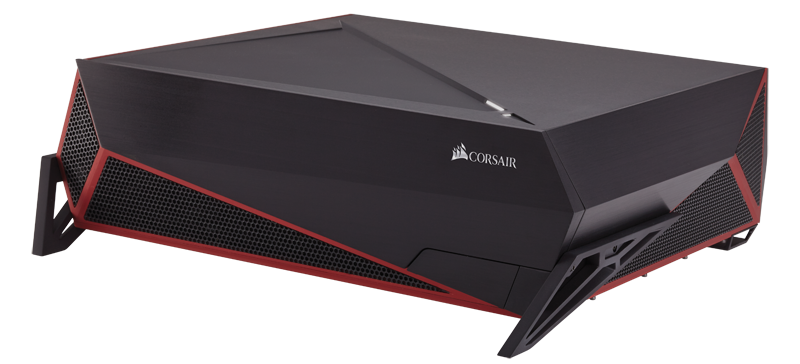
Corsair has a product in some of the major parts of the PC hardware industry ranging from cases to cooling solutions and even memory. Its latest products at this year's Computex continue that tradition, but the company isn't afraid to go outside its comfort zone, as evidenced by a new product under the well-known brand name.
The Quiet PSU
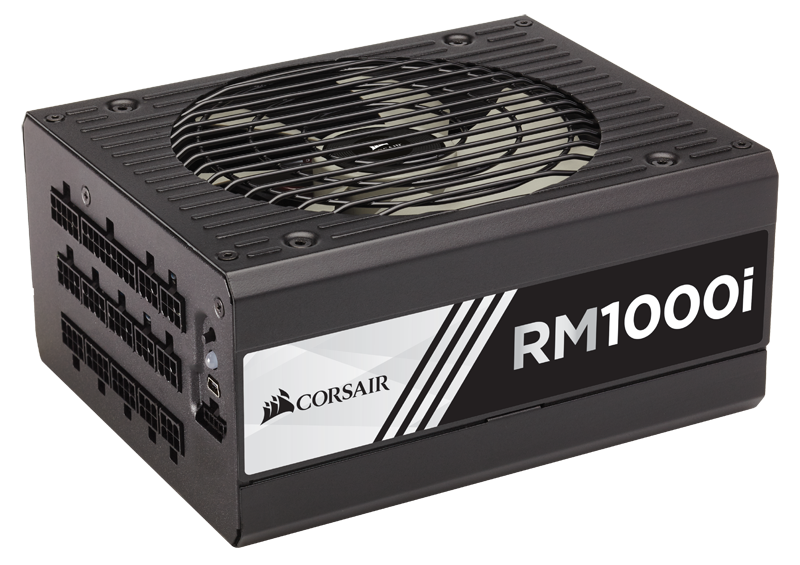
Whether you have an HTPC, laptop or desktop computer, one thing you're always concerned with is sound output. That is, how loud the fans get when the computer is put under heavy load. New advancements in PSU construction created fans that only spin at full speed if necessary. Corsair already has some components like this, such as the RM series, but it's adding even more to the same lineup in the form of the RMi PSUs.
Just like the regular RMI components, these new and fully modular parts are rated at 80 PLUS Gold efficiency and use what the company calls Zero RPM, which has the 140 mm fan running only when the load on the PC reaches high levels. It also still has the default +12V multi-rail mode that can be toggled to single-rail, and it also contains Corsair Link, the company's software that allows monitoring of various PSU traits such as power consumption and fan speed.
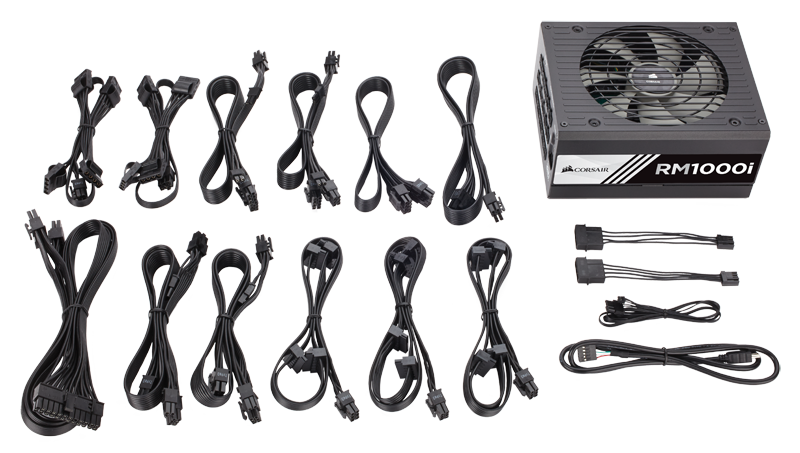
However, there are a few differences between the old and new models. The RMi PSUs are made from Japanese 105-degree capacitors, which the company said reduces heat and stretches the lifespan. The range of hardware is smaller as well; the low-end for the RM series was 450 W, but for the RMi units start at 650 W.
The entire lineup of RMi PSUs will see release sometime this June and come in four SKUs: 650 W ($129.99), 750 W ($139.99), 850 W ($159.99) and 1000W ($189.99).
Same Case, More Grill
Corsair's latest case then isn't exactly a new model, but rather more of a slight variation on an existing template.
The Obsidian Series 750D Airflow Edition replaces the solid front panel with a perforated grill, which should help with increasing air intake from the front of the case. Other than that, everything is still the same. Three AF140L 140 mm fans are still included with room for up to eight fans: two in front (120 mm or 140 mm), three or two fans at the top (120 mm or 140 mm, respectively), one in the rear (120 mm or 140 mm) and two 120 mm fans on the bottom. For radiators, the front allows 240 mm or 280 mm units. You can opt for 280 mm or 360 mm at the top of the case, 120 mm or 140 mm in the rear, and 240 mm at the bottom.
Stay On the Cutting Edge: Get the Tom's Hardware Newsletter
Get Tom's Hardware's best news and in-depth reviews, straight to your inbox.
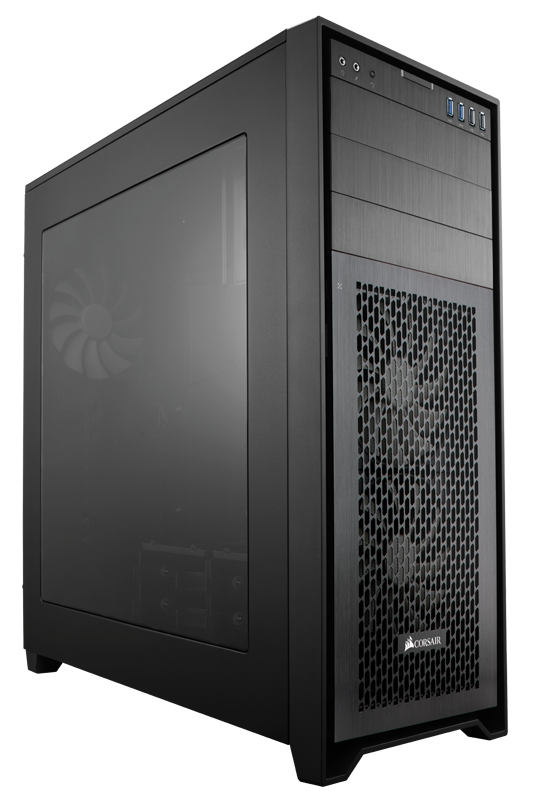
The case also includes nine expansion slots, three 5.25-inch bays, four 2.5-inch bays for SSDs, and six 3.5- and 2.5-inch combo bays for HDDs and SSDs. The front of the case also includes four USB ports (two USB 3.0 ports and two USB 2.0 ports) as well as headphone and mic jacks.
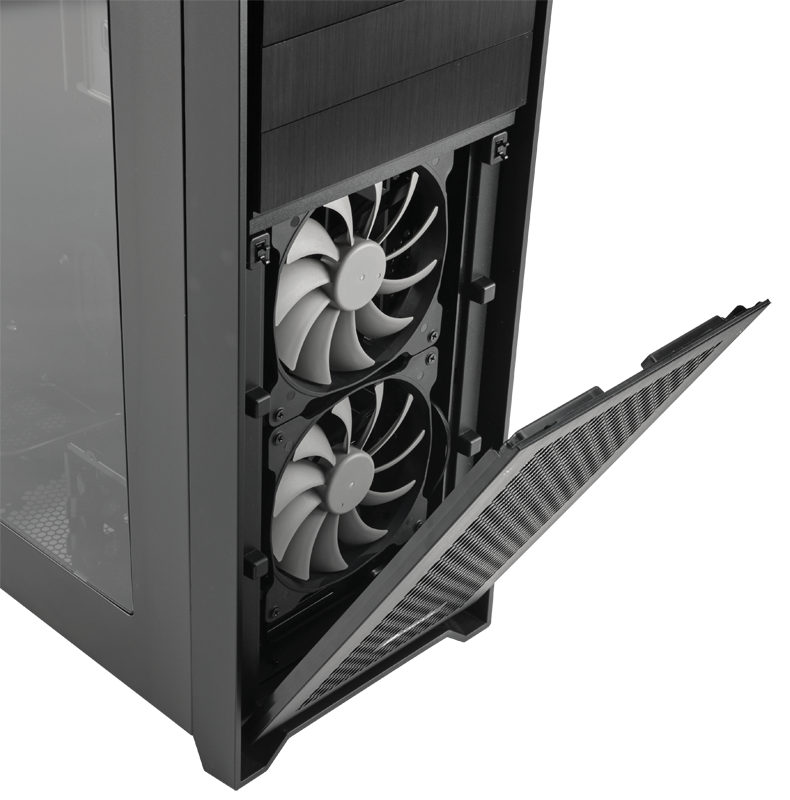
The Obsidian Series 750D Airflow Edition is available now for $159.99, the same price as its solid front-panel brother, so you don't have to pay a premium if you want to show a little more of the interior with the new case.
In the Living Room
Corsair mostly deals in individual PC components, but this year it's trying something new with Bulldog, the company's first step into the HTPC market. With Bulldog, Corsair believes it can deliver a 4K gaming experience in the living room while keeping the small computer quiet and cool.

One of the main issues with HTPCs are the parts available from the company and cost, as we recently learned from an interview with Steiger CEO Martin Gossner. But instead of providing all the parts including a processor and graphics card, Corsair is only offering what it calls a DIY Kit for $399.
The package comes with the chassis, colored in a red and black scheme with grills and the brushed aluminum finish (two USB 3.0 ports, headphone and mic jack); a 600 watt SFX12V PSU (featuring a 92 mm fan); a Mini-ITX motherboard (DDR4 memory up to 32 GB, USB 3.1, Gigabit Ethernet, Wi-Fi, 7.1 surround sound audio); and its own Hydro Series H5SF liquid CPU cooler. The rest, such as CPU, GPU and RAM, is up to you.
As part of company's promise on delivering a quiet and cool high-functioning computer, it also partnered with MSI and Nvidia to provide an H55 liquid cooler and HG10 bracket for GeForce GTX Titan X, 980 and 970 GPUs. The radiator and bracket combo will cost you an additional $99, and Corsair will also be working with other companies to provide liquid cooling on their GPU versions.
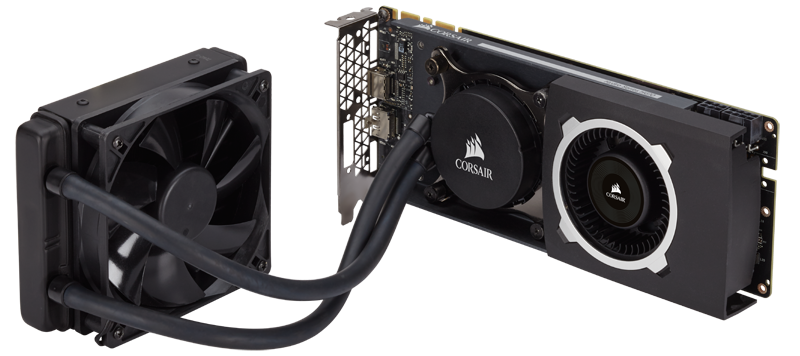
Of course, no computer is complete without peripherals, so the company made a companion to the Bulldog that houses your keyboard and mouse, appropriately named the Lapdog. This control center is a wired device with a USB hub hidden beneath the top cover for your mouse and keyboard.
It also has three USB ports on the right side for other devices such as phones and USB drives (two USB 3.0, one USB 2.0). Aside from a slot for a keyboard, it also has a 7x11-inch mouse mat, which should provide enough mousey real estate. There's also a tiny rod that feeds the mouse wire into the USB hub in the Lapdog to keep the cable out of the way, and there's also enough space under the top cover so that all your keyboard and mouse wires are tucked away and hidden from view. Memory foam is also placed at the bottom of the Lapdog so that it comfortably conforms to your legs.

The images show a tenkeyless keyboard, specifically Corsair's K65 RGB model, which altogether puts the Lapdog at $199, but it seems that you can fit any tenkeyless keyboard in there as well. The barebones version without Corsair's keyboard will only cost you $89. Both the Lapdog and Bulldog will be available in Q4 of 2015, with a more precise release date coming soon.
Eyes to the Future
By continuing to provide more versions of its well-known products, Corsair continues to keep a loyal customer base that's been around for quite some time. However, initiatives like the Bulldog and Lapdog show that the company is keeping its ear close to the ground and staying with the times to meet the needs of long-time customers and first-time builders.
Corsair has a diverse lineup that caters to the DIY crowd, looking to find quality parts for their builds, but with an HTPC on the way, it's providing a foundation for something more. It's filling in some of the more necessary components and leaving the important choices in a build to the user. The next few months should be interesting, especially when we finally get to see how Corsair stands up in the HTPC game.
Follow Rexly Peñaflorida II @Heirdeux. Follow us @tomshardware, on Facebook and on Google+.
-
dstarr3 Why do OEMs keep making such ugly HTPCs? We're finally getting some games for adults. Can we start getting HTPCs for adults, too?Reply